September 22 is World Rhino Day. Everybody knows what the giant mammal looks like. But what else do you know? Here are some fun facts you may not have heard before which can help you understand more about this charming, but endangered animal.
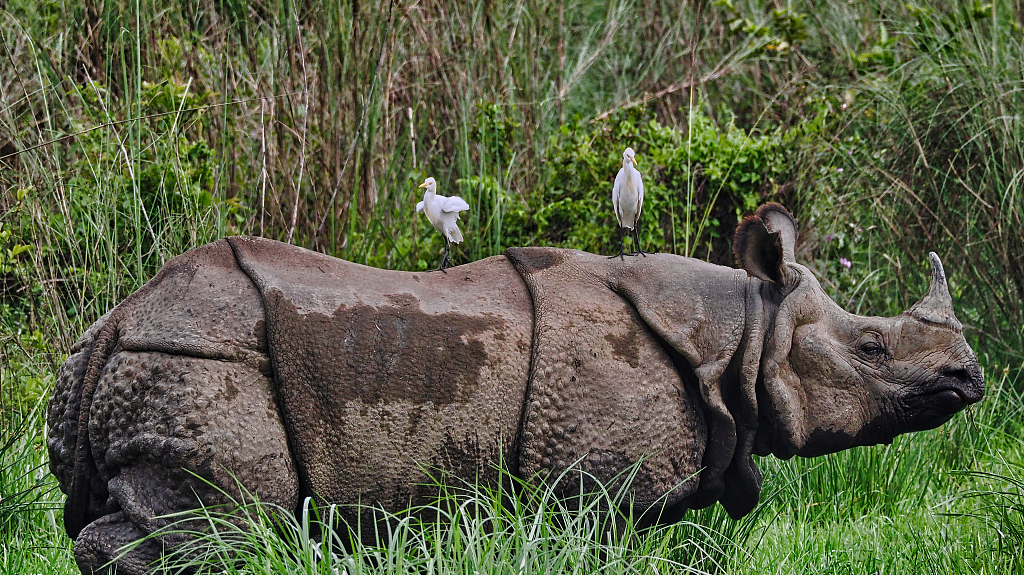
Both the Indian rhino and the Javan rhino have only one horn. /VCG Photo
Both the Indian rhino and the Javan rhino have only one horn. /VCG Photo
1. Asia is home to rhinos too
When talking about rhinos, many people have Africa in mind immediately. However, three of five rhino species are endemic to South Asia.
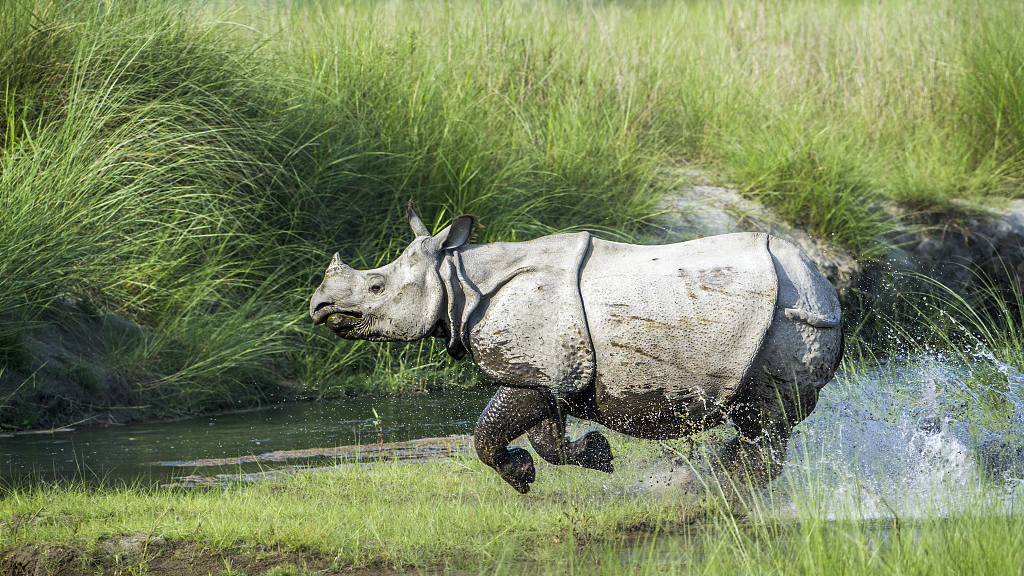
China once had the one-horned rhinos. /VCG Photo
China once had the one-horned rhinos. /VCG Photo
2. China used to have rhinos
All three rhino species of Asia, including the Indian rhino, the Javan rhino, and the Sumatran rhino, used to reside in China. Sadly, they are regionally extinct. Today, they only live in fragmented habitats in Nepal, India, Bhutan, Indonesia and Brunei.
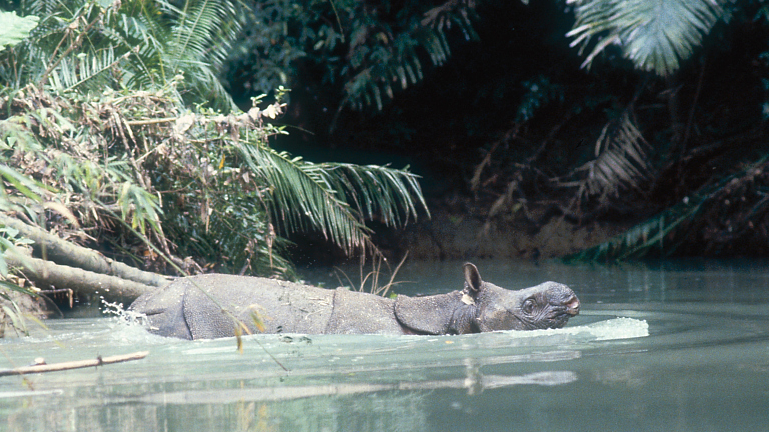
Female Javan rhinos do not have horns. /VCG Photo
Female Javan rhinos do not have horns. /VCG Photo
3. One rhino species has a population under 100
There are only 46-66 individuals of Javan rhinos, which means it is roughly 20 times rarer than the giant panda.
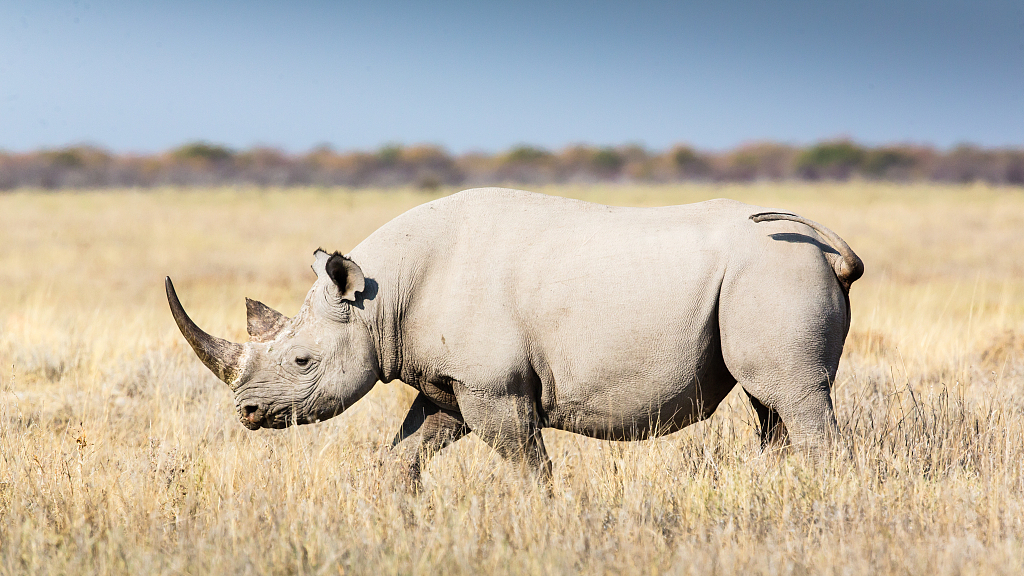
The white rhino is grey. /VCG Photo
The white rhino is grey. /VCG Photo
4. The white rhino is not white
If you have seen white rhinos in local zoos, you may find they are gray, not white. The name is a mistranslation from Dutch to English: the English word "white" is actually a Dutch word "wijd", meaning "wide" and referring to the rhino's wide lips. In fact, another name of the white rhino is the square-lipped rhino, which is more accurate.
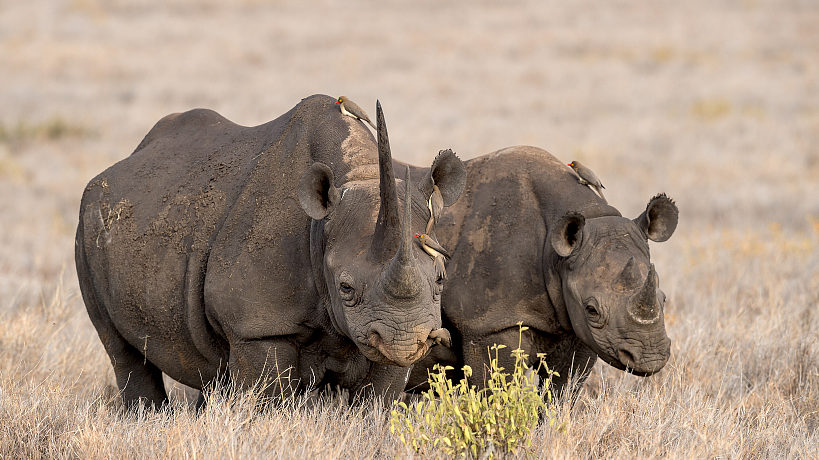
The black rhino's dark color may only be mud. /VCG Photo
The black rhino's dark color may only be mud. /VCG Photo
5. The black rhino may not be blacker than the white rhino
Well, the two rhino species have similar color, especially in the wild. So how can you tell them apart? The main difference is their lips: White rhinos have broad flat lips for grazing grass, whereas black rhinos have long pointed lips for eating leaves and foliage. By the way, the two species can mate and successfully produce offspring.
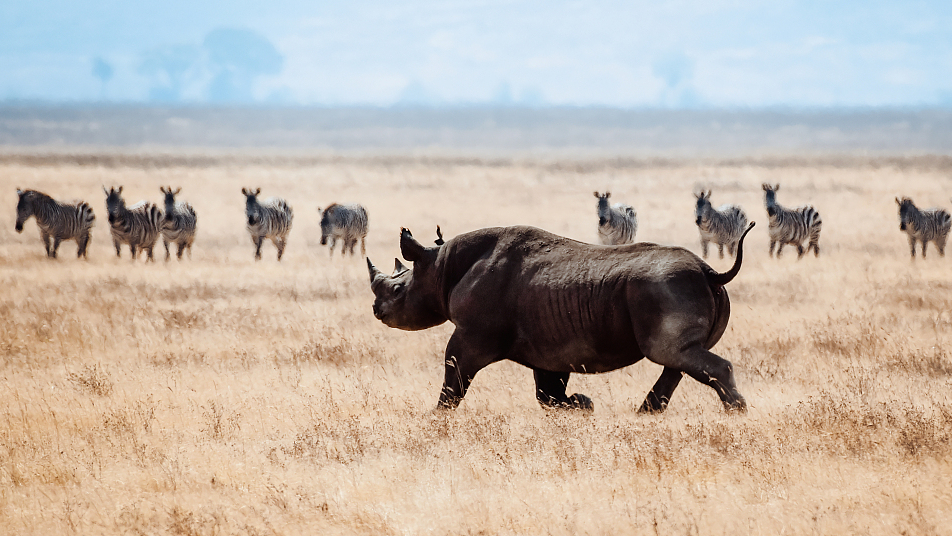
Both belonging to odd-toed ungulate, the rhino and the zebra are relatives. /VCG Photo
Both belonging to odd-toed ungulate, the rhino and the zebra are relatives. /VCG Photo
6. The rhino's close kin is the horse
The rhino is an odd-toed ungulate, which means it is more closely related to horses, zebras and tapirs, rather than other ungulates such as the buffalo, the bison or the hippo.
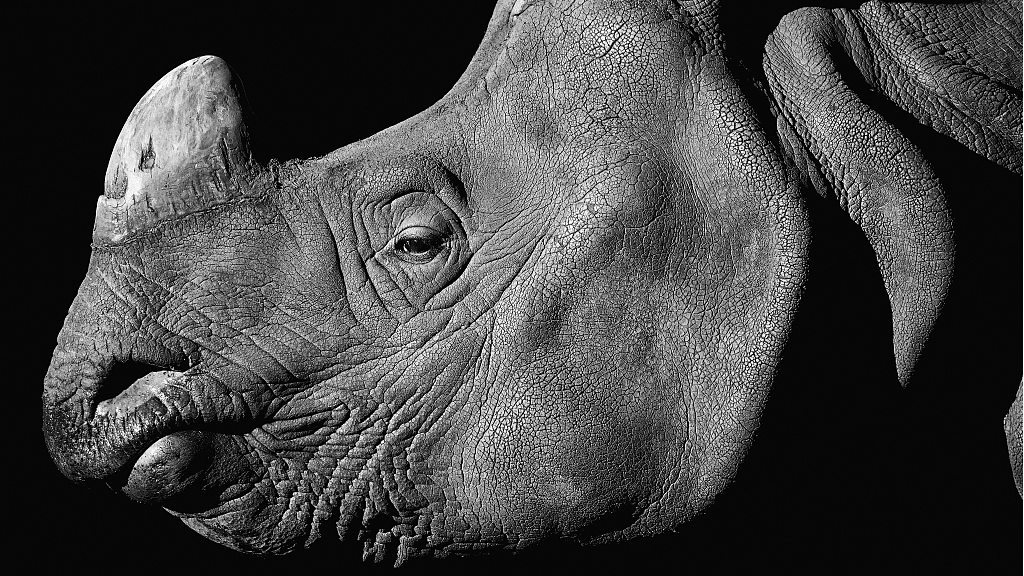
A rhino's brain is only about 0.05% of its body weight. /VCG Photo
A rhino's brain is only about 0.05% of its body weight. /VCG Photo
7. The rhino does have a small brain
Well, it may not be smarter than it looks. All rhino species reach or exceed one tonne in weight, but their brains are merely 400-600 grams.

The rhino's feet are not as tough as they look. /VCG Photo
The rhino's feet are not as tough as they look. /VCG Photo
8. The rhino has super thick skin and sensitive feet
A rhino's skin can be as thick as five centimeters, which provides perfect protection. Its hooves look just as rough as its body, however, their feet are vulnerable. If kept in the zoo, hard surfaces like concrete may hurt them.
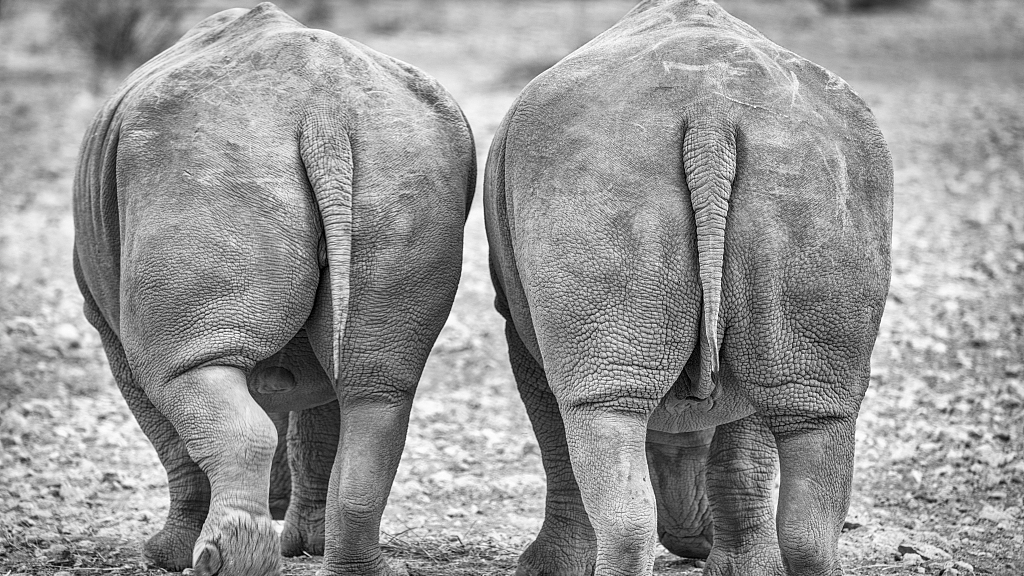
Guess whose butts are these! /VCG Photo
Guess whose butts are these! /VCG Photo
9. Rhinos communicate, or "blind date", through poop
A research of white rhino shows that their droppings are unique identifiers, enabling them to take one whiff of a dung heap and instantly know the animal's age, sex, and reproductive status. By this method, the former can decide if the latter is available for dating. By the way, they spray urine, too. A male rhino can spray several meters to leave a territory mark as well as a dating invitation.
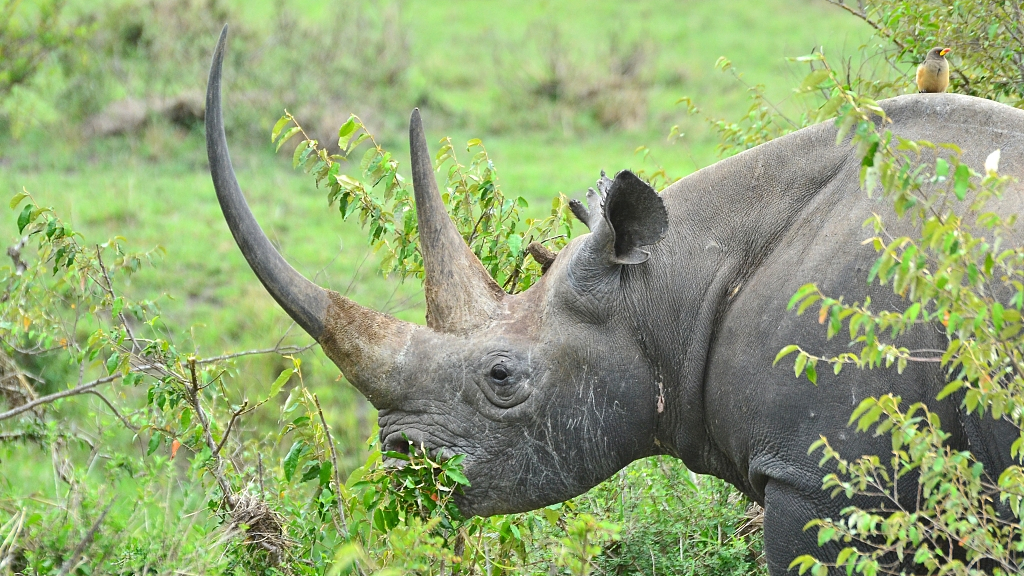
No predator can hunt an adult rhino, except humans. /VCG Photo
No predator can hunt an adult rhino, except humans. /VCG Photo
10. An adult rhino has no rival
Adult rhinos have no real predators in the wild, except humans. However, a young calf may be prey to big cats, crocodiles, African wild dogs and hyenas.
11. You may know this but it's still worth emphasizing again: Rhino horns are NOT medicine
The rhino horn, unlike those of other horned animals, does not have a bony core. It is completely made of exactly same material of human hair and fingernails. They have no medical value. China removed rhino horn from the official Chinese medicine pharmacopeia in 1993.
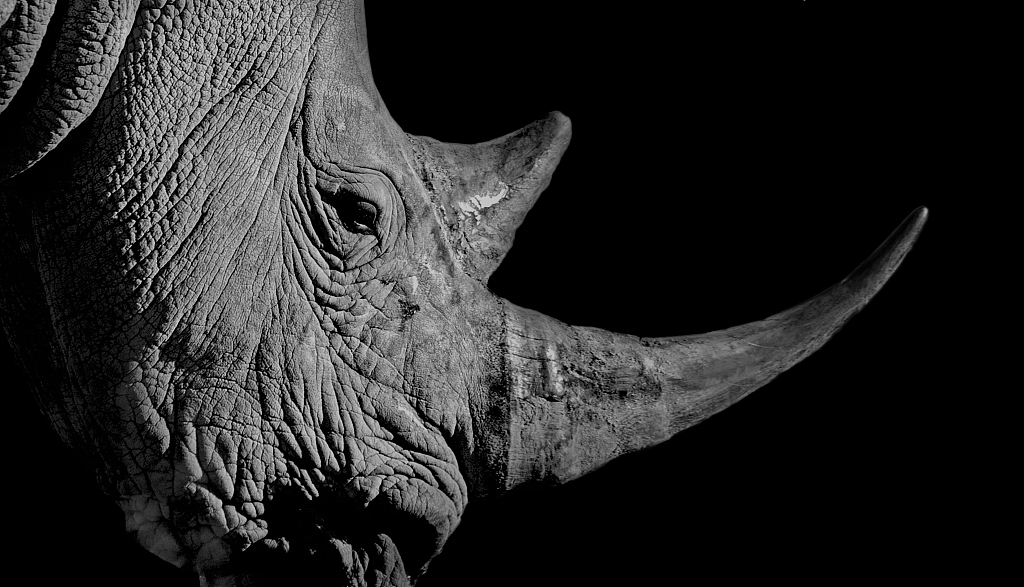
Only the rhino needs its horn. /VCG Photo
Only the rhino needs its horn. /VCG Photo
(Cover image from VCG)
(If you want to contribute and have specific expertise, please contact us at nature@cgtn.com)